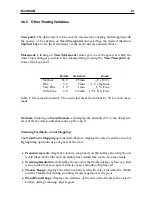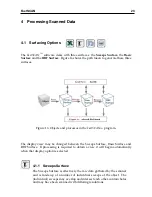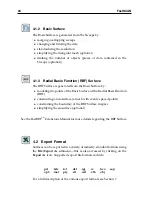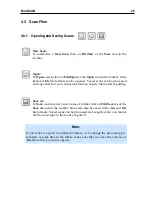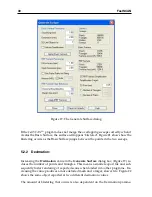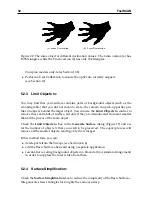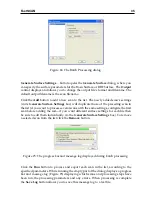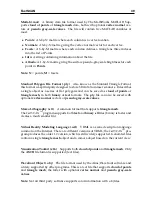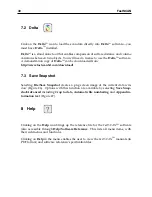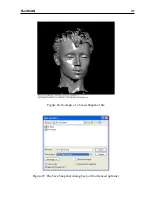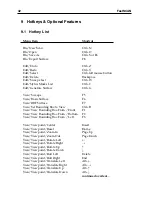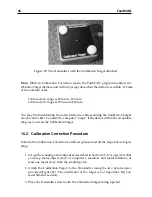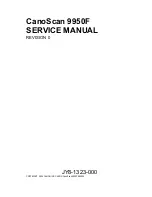
FastSCAN
31
(a) Smoothing at 0.5 mm.
(b) Smoothing at 2 mm.
Figure 20: Two Basic Surfaces generated from the same Sweeps using different
Smoothing parameters. In (a) the sweeps did not combine correctly, while in (b) they
did.
Figure 21: An illustrative example of how a blistered surface (black line) can form
between two misaligned sweeps (gray lines).
ter. Smaller Decimation values will have more blistering, while larger values may be
completely free of it. If you lower the Decimation value you may also need to raise
the
Smoothing
value to compensate.
If you cannot find a suitable value that merges sweeps while also preserving detail,
try the following:
•
Register the sweeps (see Section 5.3).
•
Delete the portion of the sweep(s) which is causing the problem.
•
Undo the sweep(s) over the problem area, and re-scan if necessary.
•
Re-scan the object after removing metal objects from the scanning area.
•
Fix the object and the reference securely so that they cannot move during scan-
ning. Tethering the cables of the transmitter or reference receiver is often impor-
tant.
•
Ensure that the Wand, Transmitter and object are kept as close to each other as
is conveniently possible. This also applies to the Reference Receiver if it is the
reference device.
•
Perform an Alignment Check to ensure that the optics are correctly aligned





